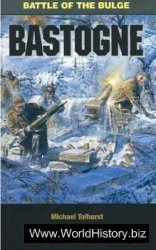This chapter has tried to make sense of the encounters between the foreign and the domestic in the early Cold War. Historians have yet to fully uncover and explain the layers and meanings of these encounters, for the disciplinary fluidity between diplomatic, social, and cultural history is still relatively new. Our histories of the Cold War are now richer as a result of that fluidity, but the question remains about whether or not we can identify a distinctive "Cold War culture" in the first decades after World War II. The phrase "Cold War culture" itself, as Peter Filene has observed, is "irresistibly convenient," for it fuses the diplomatic and domestic with a conciseness that still makes room for lots of interpretive possibility.702 It suggests the fantasy of a neat and overarching framework to explain all domestic developments through a singular conflict. But the Cold War was no monolith and, though that is not an original statement, it bears repeating in any essay on Cold War political culture. There was popular consensus that Communism was bad and national security was good but, beyond this, there was debate and dissent about the degree to which daily life should be given over to these principles.
Although our popular fascination with the Cold War has centered on its more dramatic showdowns and shadowy covert intrigue, ultimately, the more absorbing history is found in its fissures and ambiguities. The Cold War did not create the red scare, but it certainly gave it legitimacy, lethality, and longevity. Indeed, Schrecker has called McCarthyism "the most widespread and longest lasting wave of political repression in American history."703 And, still, the same Cold War political culture that allowed Senator McCarthy to capture center stage also gave him the hook when his act wore thin. Similar complex dynamics played out in social movements. Cold War politicians demanded loyalty from labor and African-American groups, but these movements’ patriotism was always conditional - expectant of rights at home in
Return for support of adventures abroad. And in the so-called private realm of gender and family relations, too, containment does not hold up as a metaphor. There were simply too many ideological crosscurrents at work: one can find pairings of Cold War doctrine with a whole range of conservative and liberal gender worldviews. Richard Nixon’s Cold War triumphalism at the "kitchen debate," where he held up homemakers and their gadgets as a sign of American supremacy, was the conservative variant; female activists who pushed for more rights, using the very language of postwar domesticity, was the liberal version.
In the end, it was the diversity, plurality, and the decentralized individuality of postwar American society - the very characteristics celebrated by Cold War boosters - that made Cold War political culture less sturdy and steady than its adherents had hoped. The Cold War’s cultural authority was constantly tested by these more resilient and long-evolving features of American political culture. As literary scholar Donald Pease has written, "the cold war framework was inherently unstable," for it tried to construct "a coherent national identity out of diverse constituencies whose differences could only be partially and unevenly repressed." It was a culture, he says, "whose stability had to be constantly renegotiated" on the ground - in response to the ways American people really lived their daily lives.704 Cold War culture was not an abstraction. We know far too much to say its force was mainly rhetorical. But where it did materialize - in the state, in the law, in the workplace, in political movements, and in neighborhoods and families - its power was never absolute.




 World History
World History









